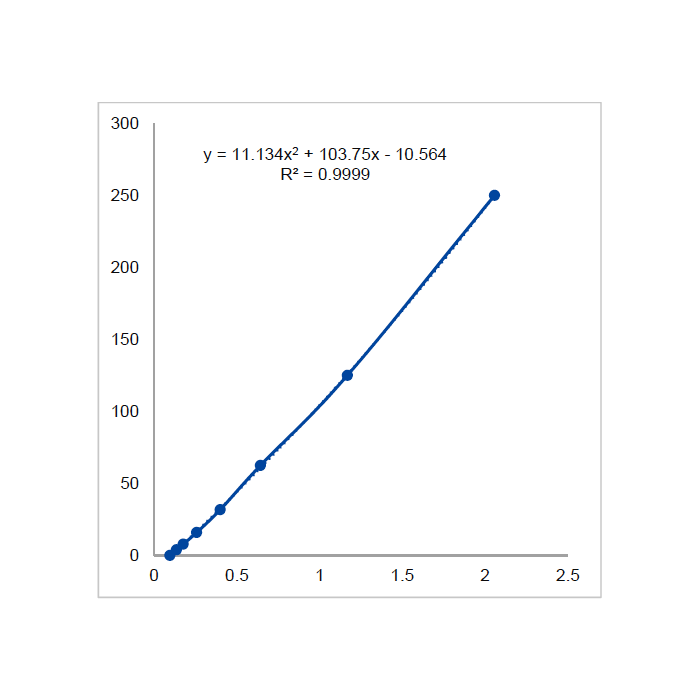Cookie Policy: This site uses cookies to improve your experience. You can find out more about our use of cookies in our Privacy Policy. By continuing to browse this site you agree to our use of cookies.
AdipoGen Life Sciences
IL-36γ (human) ELISA Kit

| Product Details | |
|---|---|
| Synonyms | Interleukin-1 Family Member 9; IL-1F9 |
| Product Type | Kit |
| Properties | |
| Application Set | Quantitative ELISA |
| Specificity | Detects natural and recombinant human IL-36γ. |
| Crossreactivity | Human |
| Quantity | 1 x 96 wells |
| Sensitivity | 3pg/ml |
| Range | 3.9 to 250pg/ml |
| Sample Type |
Cell Culture Supernatant Serum |
| Assay Type | Sandwich |
| Detection Type | Colorimetric |
| Shipping and Handling | |
| Shipping | BLUE ICE |
| Short Term Storage | +4°C |
| Long Term Storage | +4°C |
| Handling Advice |
After standard reconstitution, prepare aliquots and store at -20°C. Avoid freeze/thaw cycles. Plate and reagents should reach room temperature before use. |
| Use/Stability | 12 months after the day of manufacturing. See expiry date on ELISA Kit box. |
| Documents | |
| Manual |
 Download PDF Download PDF |
| MSDS |
 Download PDF Download PDF |
| Product Specification Sheet | |
| Datasheet |
 Download PDF Download PDF |
IL-36α (IL-1F6), IL-36β (IL-1F8) and IL-36γ (IL-1F9) are members of the IL-1 cytokine family that bind to IL-36R (IL-1Rrp2) and IL-1RAcP, activating similar intracellular signals as IL-1 and are inhibited by IL-36Ra. The expression of IL-36 cytokines occurs mainly in the lung and skin and can be derived from diverse epithelial cell types including keratinocytes, bronchial epithelium as well as macrophages, monocytes and different T cell subsets. IL-36 family members induce the production of pro-inflammatory cytokines, including IL-12, IL-1β, IL-6, TNF-α and IL-23, thus promoting neutrophil influx, dendritic cell (DC) activation, polarization of T helper type 1 (Th1) and IL-17-producing T cells (αβ T cells and γδ T cells) and keratinocyte proliferation. Induction of IL-36γ in macrophages upon M. tuberculosis infection and its role in the release of antimicrobial peptides has been proposed. IL-36γ is also induced in the lung in various models of asthma and can be produced by bronchial epithelial cells in response to viral infection, smoke or inflammatory cytokines and plays an important role in asthmatic pulmonary inflammation. IL-36γ might be a potential biomarker of Inflammatory Bowel Disease and is highly expressed in inflamed skin from psoriasis patients and in Allergic Contact Dermatitis. IL-36γ serum levels are enhanced and correlate to psoriasis severity and response to treatment with anti-TNF.
- IL-36γ drives skin toxicity induced by EGFR/MEK inhibition and commensal Cutibacterium acnes: T.K. Satoh, et al.; J. Clin. Invest. 130, 1417 (2020)
- Macrophage Phenotypes in Lung Fibrosis: C.K. Koss; Diss. Univ. Konstanz (2021)
- IL36 is a critical upstream amplifier of neutrophilic lung inflammation in mice: C.K. Koss, et al.; Commun. Biol. 4, 172 (2021)
- Imbalance between IL-36 receptor agonist and antagonist drives neutrophilic inflammation in COPD: J.R. Baker, et al.; JCI Insight e155581, (2022)






